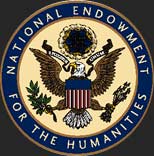Declarations of Independence
Introduction
The political discussions of the last many years have led the colonies to the ultimate debate on independence. The second Continental Congress continues to meet in Philadelphia in the spring and summer of 1776, its members daily confronted with the pressures of being the operating government of a set of colonies not yet divorced from their parent country, but already at war. Washington sends frequent reports and requests supplies and money to pay his soldiers. Meanwhile, the British Navy, largest in the world, sails straight for New York and threatens the revolutionary efforts as congressional members are locked in debate.
Emphasizing once more the beliefs it has espoused since the beginning of the conflict, the Massachusetts General Court reminds the citizens of the colonies that governmental power belongs "in the Body of the People."
To that end, Massachusetts representative John Adams returns to the Continental Congress with a new nation's to-do list, while his peers at home in the General Court "bring in a resolve" that calls for support from every corner. In response to this resolve, the towns of Massachusetts draft letters to their representatives and the rest of the Continental Congress, outlining for them "the path of your duty" with respect to the question of independence.
A similar resolution reaches Congress from Williamsburg, in which the Virginia legislature concludes there is "no alternative left" to a final break with Great Britain. Virginia representative Richard Henry Lee submits a formal resolution for independence on 7 June 1776. A committee forms to draft a declaration to that effect, composed of Thomas Jefferson, John Adams, Roger Sherman, Robert Livingston, and Benjamin Franklin.
Hinting in his private records only at his need "for a pencil," Jefferson drafts the Declaration of Independence and submits it for approval to the Continental Congress. Though the Congress approves it on 2 July 1776, the representatives also make some changes as a result of their debates. Still, Jefferson believes strongly in his own words, and preserves his own version as well. John Adams takes it upon himself to create a clean copy, and jubilantly writes to Abigail his belief that "Posterity will tryumph" in the work accomplished in Philadelphia this day.
The news races up and down the roads of the newly proclaimed United States of America, and Abigail writes to her husband about the "Cheers which rended the air" at the public announcement of independence. The political bounds between Great Britain and her colonies have been formally dissolved, and with this Declaration, the new United States of America is poised to claim her "separate and equal Station" among the other nations of the world.
Rowe's Revolution
"This day Independency was Declared in Boston from the Balcony of the Council Chamber.... A great Confusion in Town.."
Diary of John Rowe,
18 July 1776




![Printed resolves of the Massachusetts House of Representatives from A Journal of the Honorable House of Representatives, [Watertown, 1776]](/database/images/5001_264_th.jpg)






![Broadsides, three printings of the Declaration of Indpendence: (Philadelphia: printed by John Dunlap, 1776); (Baltimore: printed by Mary Katherine Goddard, [1777]); (Salem, Mass: printed by E. Russell, [1776])](/database/images/0055_dec_trans_work_th.jpg)

